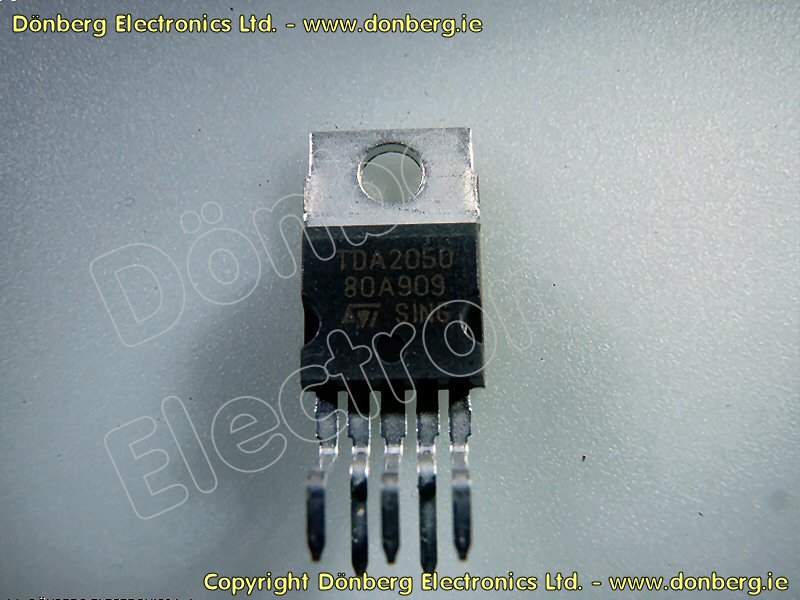I have owned 2 Cambridge 30R amps-one from 2001 and one from 2005. The latter is noticeably louder and although it was sold as a Cambridge 30 the rear panel label says 42w. I think some of these amps also varied in tone depending on year made. I believe it's the same with other makes. Didier replied to a previous post re:the optocoupler on recent Cambridge amps. This sits under the volume pot of the overdrive channel not the tremolo pot ,and I think what it does is connect the two channels.
Does the quality of an amp vary according to where it's made? ie; China,South Korea,Vietnam ?
Stated output of amps compared to actual
Moderators: David Martin, dave robinson, Iain Purdon, George Geddes
22 posts
• Page 1 of 3 • 1, 2, 3
Re: Stated output of amps compared to actual
Vincent wrote:Does the quality of an amp vary according to where it's made? ie; China,South Korea,Vietnam ?
No. Electronic circuitry doesn't know what country it is being made in, or who is making it.
Provided that the components are of sufficient quality, that they are of the right specifications and tolerance and provided that the implementation (quality of physical design and workmanship) is of sufficiently high quality, a given circuit will operate in the same way no matter where it is made.
Quality is the key factor. Cheap amps are usually designed down to a price. Take Fender amps as an example of the higher end. For the premium handwired reissues and custom models (typically costing £1500 to £2000 for a reasonably high-powered valve combo), the components will be the best the factory can source, and preferably equal to or better than the vintage components used 40-50 years ago. Then there are the valve "reissues" built using PCBs (I have two of them), costing sort of £900 - £1250 depending on model. These, apart from the reduction in cost afforded by the elimination of handwiring, still use best-available premium components, especially the transformers and the speaker(s).
On the other hand (and passing over the company's USA-made all-solid-state amps), they do a range down at the bottom end (eg, a 100w two speaker combo for around £200) which are perfectly fine for many purposes, but which achieve their price point by ruthless cost-cutting and cost-paring. Key components such as speaker and transformers are sourced very cheaply and you don't get good robustness and longevity (electrical or mechanical) at those sort of prices. Then there's the effect on the audio-chain.
The main point is that volume is not just a function of power output. All the links in the chain need to be strong. A 50watt amplifier with good transformers and speakers can outperform a 100watt amp with low-quality transformers and speakers.
JN
-

JimN - Posts: 4799
- Joined: Thu Sep 17, 2009 11:39 pm
- Full Real Name: Jim Nugent
Re: Stated output of amps compared to actual
Vincent wrote:The latter is noticeably louder and although it was sold as a Cambridge 30 the rear panel label says 42w.
I guess that 42w is the mains power consumption, not the audio output power.
Cambridge 30 amps use a SGS-Thomson TDA2050 power module rated at 32w. Some people have replaced it by a National Semiconductor LM3875 power module rated at 56w, although I have a little doubt that the power supply can deliver enough current to make this module work at full power.
The difference in loudness between two Cambridge 30 might come from the optocoupler problem in one of the two amps, unless if one has been modified.
The loundness of an amp doesn't come only from it's audio power output, but also from it's speaker efficiency. An easy way to make an amp louder is to replace the original speaker by a model with higher efficiency.
I tested a Celestion G10 Vintage speaker on a Cambridge 30, this speaker has a higher sensivity that the original Bullgog speaker and made the amp noticeably louder (the replacement is easy, the G10 Vintage fits without any mechanical modification).
I have a friend who replaced the original 10" speaker on a Harley-Benton GA15 amp by an Eminence Ragin Cajun, it also made the amp louder thanks to the new speaker higher sensivity.
Didier
-

Didier - Posts: 1943
- Joined: Tue Sep 15, 2009 10:57 am
- Location: West suburb of Paris, France
- Full Real Name: Didier Parot
Re: Stated output of amps compared to actual
Didier wrote:Vincent wrote:The latter is noticeably louder and although it was sold as a Cambridge 30 the rear panel label says 42w.
I guess that 42w is the mains power consumption, not the audio output power.
Cambridge 30 amps use a SGS-Thomson TDA2050 power module rated at 32w. Some people have replaced it by a National Semiconductor LM3875 power module rated at 56w, although I have a little doubt that the power supply can deliver enough current to make this module work at full power.
The difference in loudness between two Cambridge 30 might come from the optocoupler problem in one of the two amps, unless if one has been modified.
The loundness of an amp doesn't come only from it's audio power output, but also from it's speaker efficiency. An easy way to make an amp louder is to replace the original speaker by a model with higher efficiency.
I tested a Celestion G10 Vintage speaker on a Cambridge 30, this speaker has a higher sensivity that the original Bullgog speaker and made the amp noticeably louder (the replacement is easy, the G10 Vintage fits without any mechanical modification).
I have a friend who replaced the original no-name 10" speaker on a Harley-Benton GA15 amp by an Eminence Ragin Cajun, it also made the amp louder thanks to the new speaker higher efficiency.
Didier
-

Didier - Posts: 1943
- Joined: Tue Sep 15, 2009 10:57 am
- Location: West suburb of Paris, France
- Full Real Name: Didier Parot
Re: Stated output of amps compared to actual
Didier is quite correct. Watts are an indication of power consumption by the amplifier, not it's loudness. Loudness is measured in Decibels, & can be affected by many things in the amplifier, particularly the efficiency of the speaker. Just listen to the apparent loudness of a Vox AC15 with a Celestion 'Blue' speaker rated at 15w, compared to your average solid-state amp with an average speaker. Turn it right up & it will cut your head off & leave you deaf. I had a so called 50w Vox Valvetronix & a Marshall 100w Valvestate combo, both of which didn't get anywhere near it.
Tony.
Tony.
- RUSSET
Re: Stated output of amps compared to actual
Hi
I have a handwired Cornford Harliquin 6w valve amp (sounds like a small AC30 1x EL84 NOS valve) fitted with a Vintage 30 1x12"speaker ideal for small gigs great sound and no ringing ears in the morning LOL would eat 30-50w transister amps all day long

I have a handwired Cornford Harliquin 6w valve amp (sounds like a small AC30 1x EL84 NOS valve) fitted with a Vintage 30 1x12"speaker ideal for small gigs great sound and no ringing ears in the morning LOL would eat 30-50w transister amps all day long
- 51 Relic
Re: Stated output of amps compared to actual
I must as usual stand up for transistor amps...
Most Peavey models are VERY loud ...regardless of wattage
However, it also depends who is actually playing....I have been told I'm too loud even on an acoustic guitar...
Most Peavey models are VERY loud ...regardless of wattage
However, it also depends who is actually playing....I have been told I'm too loud even on an acoustic guitar...
- cockroach
- Posts: 1459
- Joined: Sun Sep 20, 2009 11:33 am
- Location: Australia
- Full Real Name: john cochrane
Re: Stated output of amps compared to actual
I raised the issue of how two identical spec. amps can have different volume outputs. As suggested ,this is due to one being better connected all round and minor diffrences in component quality.
On the curcuit board of my own Vox Cambridge I found two tiny variable resistors or presets. I managed to lower the output just slightly without affecting the tone and eliminate a nasty howl -or feedback ,from the overdrive channel.
it looks to me there are 4 power transisators on these marked Ma5. The qualty of these also has a marked effect on tone. Someone suggested Germanium transistors.
Vincent
On the curcuit board of my own Vox Cambridge I found two tiny variable resistors or presets. I managed to lower the output just slightly without affecting the tone and eliminate a nasty howl -or feedback ,from the overdrive channel.
it looks to me there are 4 power transisators on these marked Ma5. The qualty of these also has a marked effect on tone. Someone suggested Germanium transistors.
Vincent
- Vincent
- Posts: 70
- Joined: Wed Mar 02, 2011 3:19 pm
- Full Real Name: vincent ludovico
Re: Stated output of amps compared to actual
Vincent wrote:it looks to me there are 4 power transisators on these marked Ma5. The qualty of these also has a marked effect on tone. Someone suggested Germanium transistors.
In the Cambridge 30 amp, the power stage is based on a TDA 2050 module :

When this amp was designed, it was a long time since germanium transistors were not used anymore.
Didier
-

Didier - Posts: 1943
- Joined: Tue Sep 15, 2009 10:57 am
- Location: West suburb of Paris, France
- Full Real Name: Didier Parot
22 posts
• Page 1 of 3 • 1, 2, 3
Who is online
Users browsing this forum: No registered users and 72 guests
These advertisements are selected and placed by Google to assist with the cost of site maintenance.
ShadowMusic is not responsible for the content of external advertisements.



